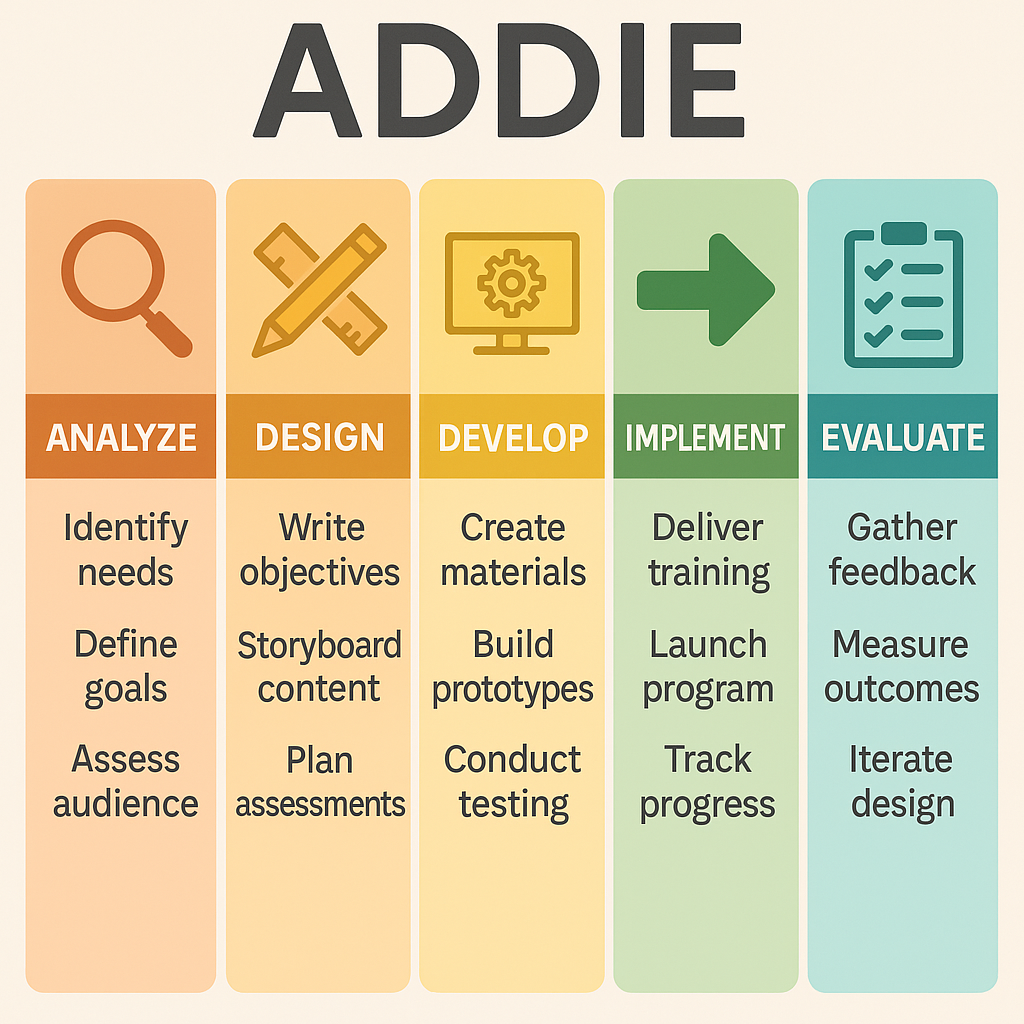
Designing Your Own Growth: What Educators Can Learn from the ADDIE Model
If you’ve ever sat through a professional development session and thought, “This could have been so much better,” you’re not alone. The difference between something that inspires you and something that puts you to sleep often comes down to design.
That’s where the ADDIE model comes in. It’s a classic framework used in instructional design, but it’s also a fantastic tool for guiding your own professional growth. ADDIE stands for Analyze, Design, Develop, Implement, and Evaluate. It’s meant for building learning experiences, but when you think about it, your career is one big learning experience too.
Analyze: Know Where You Are and Where You Want to Go
Before any good lesson or project starts, you take time to understand your students’ needs. The same goes for your career. Start by asking yourself what your goals are and what skills or experiences you already bring to the table.
What do you want your next chapter to look like? Maybe you’re thinking about becoming an instructional coach, a principal, or even moving into curriculum design. Take stock of what you need to learn and who can help you get there. A little honest reflection can save you from running in circles later.
Design: Map Out a Plan That Works for You
This is the planning stage. Once you know your goals, you can start mapping out what it will take to reach them.
Maybe that means earning a certification, leading a small project at your school, or finding a mentor who’s already doing the kind of work you want to do. Write your ideas down, set timelines, and include a few checkpoints along the way.
Think of it like lesson planning for your own career. The clearer the design, the easier it is to follow through.
Develop: Build the Tools You’ll Need
Here’s where you start putting things into motion. Begin creating the tools and experiences that will help you grow. That might mean drafting a new curriculum unit, trying out a leadership strategy with your grade-level team, or developing materials for a workshop.
You don’t need to wait until someone gives you a title to act like a leader. The best development happens when you take initiative and practice the skills you want to master.
Implement: Put Your Plan Into Action
This is the part where your ideas go from paper to practice. Start sharing what you’ve created, volunteering for projects, or presenting what you’ve learned to others.
Implementation can feel messy at first, but it’s also where you learn the most. Each experience becomes a test run for what works and what doesn’t. Every time you step forward, you’re building momentum and credibility.
Evaluate: Reflect and Refine
Just like you assess your students’ progress, take time to assess your own. Ask yourself what went well, what didn’t, and what you might try differently next time.
Seek feedback from people you trust. Sometimes others can see your growth more clearly than you can. Reflection is what turns experience into progress, and progress into purpose.
The Takeaway
The ADDIE model isn’t just a design process for lesson plans. It’s a mindset for intentional growth. Whether you’re refining your teaching practice or preparing to step into leadership, you can apply the same five steps to move forward with clarity and confidence.
Analyze where you are. Design a plan. Develop your skills. Implement your ideas. Evaluate your results.
Then start the cycle again. Because growth, like teaching, is never really finished.